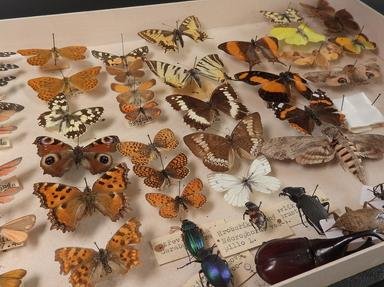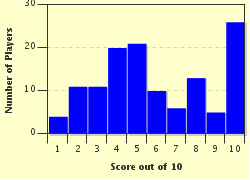Quiz Answer Key and Fun Facts
1. Turtles would love to have this insect group's unique technique for righting themselves when they take a tumble and find themselves on their backs.
2. Hearkening back to a time when people made more of their own repairs, this hovering insect is still sometimes called a "darning needle."
3. A mimic of the monarch butterfly--which is distasteful to predators from its habit of feeding on milkweed--this similarly orange and black species has darker lines along the edges of its wings. What is its name?
4. The immature, wingless, aquatic life stages of these insects are significant sources of food for trout, and "hatches" of the mature, egg-laying adults inspire feeding frenzies--except for which type of "fly"?
5. Honored by the ancient Egyptians as "scarabs", these insects also go by which much more common name?
6. Pristine mountain streams are ideal habitat for this pest, which can spoil an upland hike by attacking in clouds.
7. In the still of the night, this gentle green giant's quest for a mate can lead it along a scent trail miles long.
8. The fireflies seen roaming in the gloaming are all males, seeking what?
9. When the great British scientist J. B. S. Haldane was asked what he thought the created world showed about its Creator, he replied as follows:
10. Insects are commonly referred to as "bugs," but the true bugs are those in what insect order?
Source: Author
JordanW71
This quiz was reviewed by FunTrivia editor
crisw before going online.
Any errors found in FunTrivia content are routinely corrected through our feedback system.

